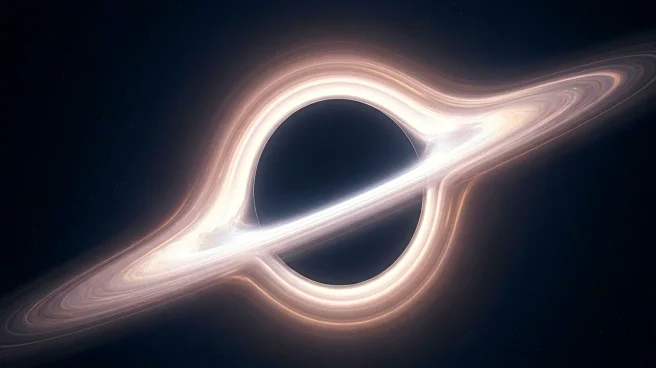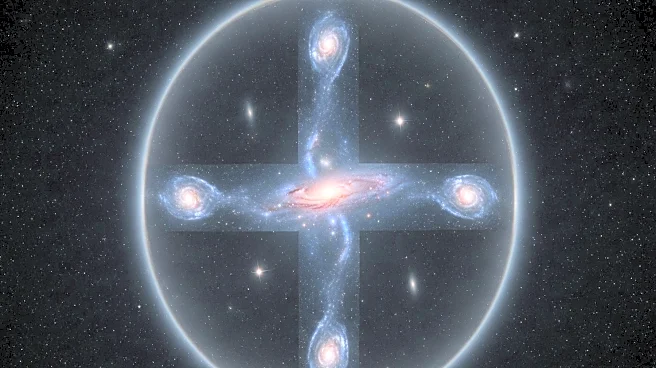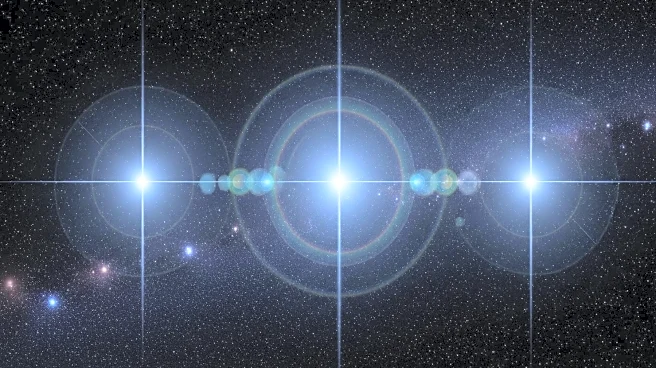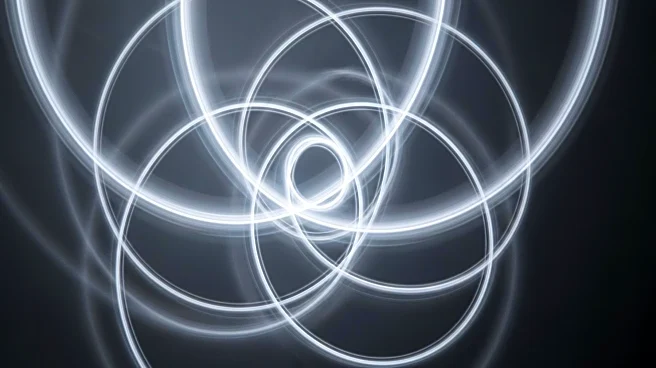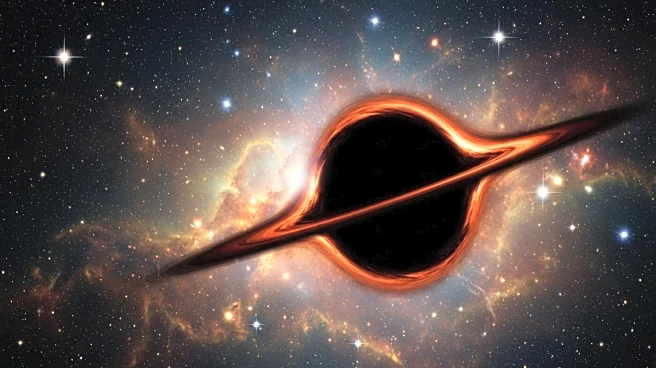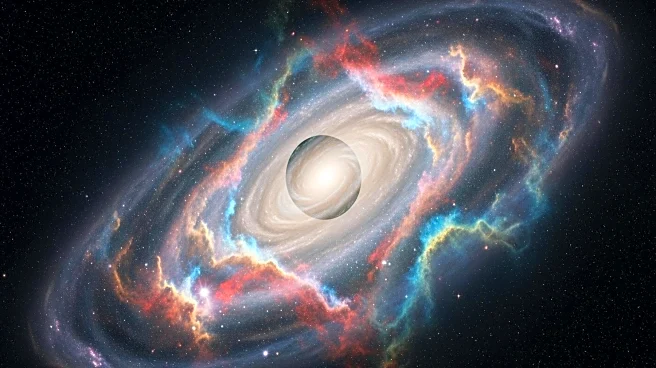What's Happening?
Astronomers have identified a rare cosmic alignment known as an Einstein Cross, which displays five points of light instead of the usual four. This phenomenon occurs when the light from a distant galaxy, HerS-3, is magnified by foreground galaxies and hidden dark matter. The discovery was made using data from the Northern Extended Millimeter Array (NOEMA) in the French Alps and the Atacama Large Millimeter/submillimeter Array (ALMA) in Chile. The unexpected fifth image in the Einstein Cross suggests the presence of a massive, invisible halo of dark matter, which is bending the light in an unusual way. This finding offers a new method to study dark matter, which cannot be seen directly but has significant gravitational effects throughout the universe.
Why It's Important?
The discovery of the fifth point in the Einstein Cross provides a unique opportunity to study dark matter, a substance that constitutes most of the universe but remains largely invisible. By understanding how dark matter influences cosmic structures, scientists can gain insights into the fundamental composition of the universe. This research could lead to advancements in astrophysics and cosmology, potentially impacting theories about the universe's formation and evolution. The ability to study distant galaxies in greater detail also enhances our understanding of galaxy formation and the role of dark matter in shaping cosmic phenomena.
What's Next?
Future observations may reveal additional features, such as gas flows from the galaxy HerS-3, providing further evidence of dark matter's magnifying effects. Researchers will continue to use advanced modeling techniques to explore the implications of this discovery, potentially leading to new methods for detecting and studying dark matter. The findings may prompt further investigations into similar cosmic alignments, expanding our knowledge of the universe's hidden components.


